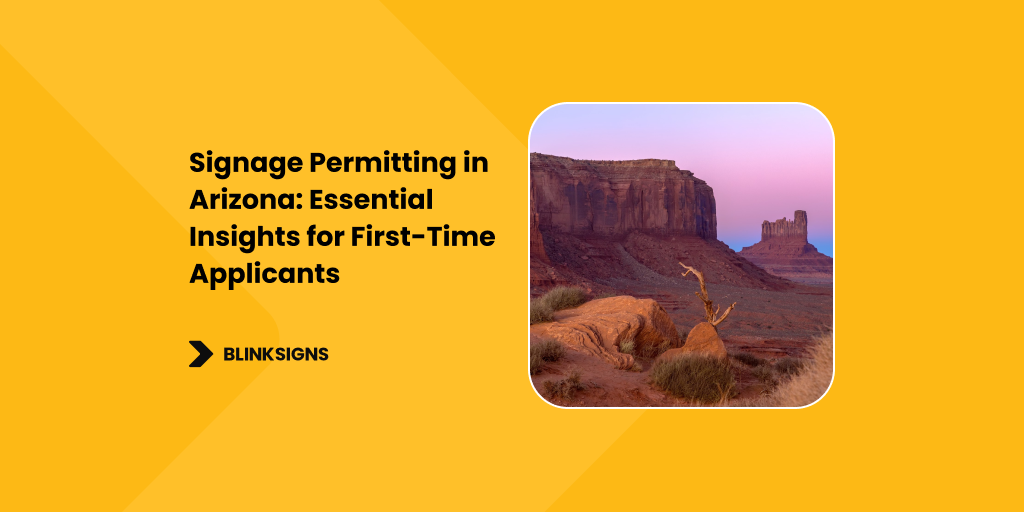
Signage Permitting in Arizona: Essential Insights for First-Time Applicants
Signage is critical in Arizona’s commercial landscape, ensuring businesses capture attention and communicate effectively with their target audiences. In cities like Phoenix, Tucson, and Sedona, signage enhances visibility and aligns with community aesthetics, blending into urban and natural environments. Proper signage is essential for brand recognition, customer engagement, and reinforcing a professional image. This article will explain the importance of signage permitting in Arizona.
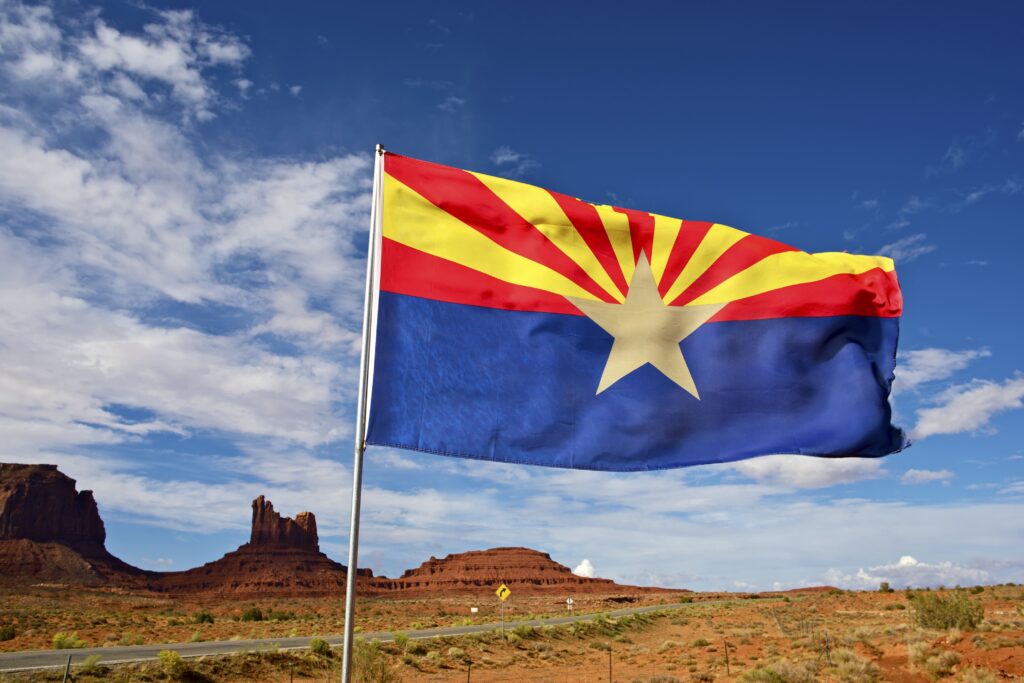
Arizona-flag-on-wind
Understanding Sign Permits in Arizona
Regulatory authorities issue a sign permit, an official document that grants permission to install or modify signage. These permits confirm that the signage complies with Arizona’s legal and safety requirements, including height, lighting, structural integrity, and environmental standards.

Sign Permitting process for Arizona
Why Sign Permits Are Necessary
Sign permits are vital to maintaining the safety and harmony of Arizona’s streets and neighbourhoods. They ensure structural integrity, adherence to zoning ordinances, and compliance with state and municipal codes. Permits also uphold community standards by preventing visual clutter, promoting public safety, and preserving the scenic beauty of areas like Flagstaff and Sedona. Businesses without permits risk penalties, forced sign removal, and reputational harm.
Key Regulatory Bodies in Arizona
The Arizona Department of Transportation (ADOT) oversees highway signage, ensuring safety and aesthetic standards compliance. Local city planning departments and zoning boards regulate signs within municipalities, focusing on placement, materials, and compliance with specific community requirements. Agencies like historic preservation boards govern signage in districts with cultural or historical significance.
Primary Regulatory Authorities
- Arizona Department of Transportation (ADOT): Regulates signage on highways and scenic routes, ensuring safety and visibility.
- Municipal Planning Departments: Govern zoning compliance and aesthetic standards in urban and suburban areas.
- Historic Preservation Agencies: Enforce guidelines to protect architectural and cultural integrity in historic districts.
- Local Zoning Boards: Manage the approval process for variances and signage in unique zones.
Legal Basis for Regulation
Arizona Revised Statutes, municipal codes, and the federal Highway Beautification Act form the legal foundation for signage regulation. These laws address safety, zoning, and environmental preservation, providing businesses with a clear framework for compliance.
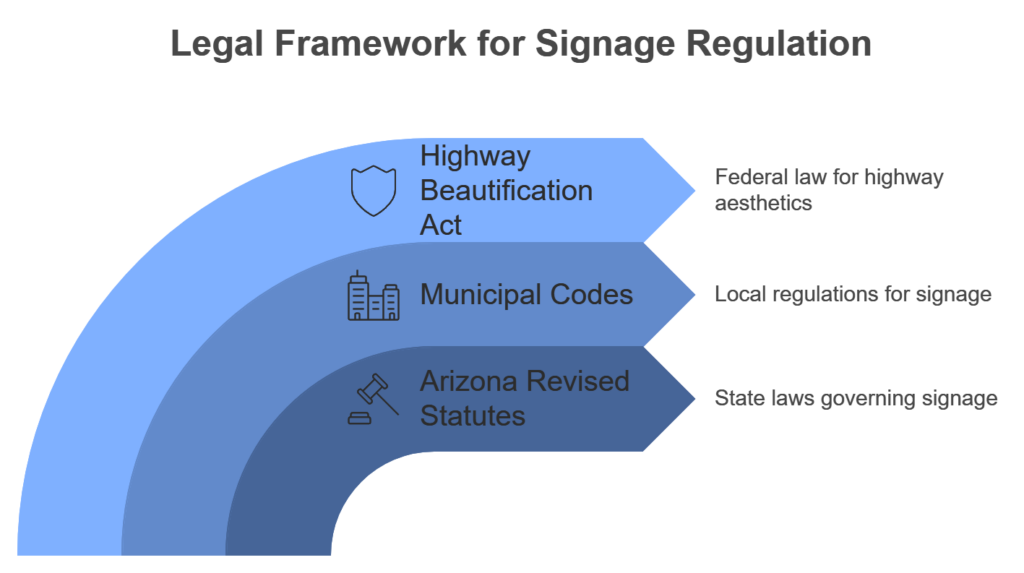
Legal Framework for Signage Regulations
Types of Signage and Their Compliance Standards
This table compares various signage types and their compliance requirements, aligning with the BlinkSigns brand voice and providing practical information for users.
| Signage Type | Description | Compliance Standards | Common Uses |
| On-Premise Signs | Signs are located on the business premises to identify or promote the business. | The structure must meet zoning requirements, including size, height, and placement. Illumination levels must also comply with local light pollution and Dark Sky Ordinances in areas like Flagstaff. | Shopping malls and business storefronts are present. |
| Off-Premise Signs | Billboards and other signs advertising businesses or services are located off the premises. | ADOT and local zoning boards regulate this. Highway Beautification Act standards restrict spacing, height, and size along highways. | We advertise on highways and billboards. |
| Freestanding Signs | Signs are mounted on poles or pillars, not attached to a building. | Structural stability must comply with Arizona Building Codes. Height and setback requirements vary by city, with stricter rules in scenic and residential areas. | There are pylon signs, monument signs, and directory boards. |
| Wall Signs | A building’s exterior walls directly host signs. | The design must not surpass a specific percentage of the wall’s surface area. Placement and design must align with local zoning aesthetics, especially in historic districts like Tucson. | There are retail shops and office buildings. |
| Digital and EMC Signs | Signs equipped with electronic displays enable the alteration of messages or animations. | We regulate the brightness and animation frequency to prevent driver distractions. Noise considerations apply for signs with sound in residential or quiet zones. | Event announcements receive real-time updates. |
| Temporary Signs | Signs designed for short-term use, such as banners, A-frames, or construction signs, are commonly used. | The duration often spans between 30 and 90 days. The placement must not obstruct visibility or encroach on public right-of-way. Renewals may be required for extended use. | We offer event promotions and real estate listings. |
| Illuminated Signs | Some signs have integrated lighting that can illuminate from the inside or the outside. | The illumination must conform to Dark Sky Ordinances. Shielded lighting is required to prevent glare and trespass, especially near residential or environmentally sensitive zones. | There are restaurants, gas stations, and 24-hour businesses. |
| Monument Signs | Stone or concrete are common materials used to create low-profile freestanding signs. | Height and setback limitations apply. Materials must align with local aesthetic standards, particularly in Scottsdale and Sedona. | There are corporate offices, schools, and gated communities. |
| Directional Signs | Signs guide visitors or customers within a property or complex. | The use is restricted to functional purposes, such as wayfinding. Although they are typically exempt from strict zoning laws, they must not obstruct traffic or pedestrian paths. | There are parking lots, hospitals, and campuses. |
| Prohibited Signs | Arizona regulations prohibit various signs, including flashing advertisements and oversized billboards. | It is prohibited to ensure public safety, aesthetic harmony, and compliance with local ordinances. Specific rules vary by city, including environmentally sensitive or historic zone restrictions. | None |
Step-by-Step Guide to the Arizona Sign Permitting Process
-
Application Preparation and Submission
To begin the process, businesses must prepare detailed documents, including site plans, material specifications, and lighting details. Accurate submissions are critical to avoiding delays.
-
Plan Review and Approval
Regulatory bodies such as ADOT and local zoning boards evaluate plans for compliance with safety, zoning, and aesthetic standards. Digital and illuminated signage undergo additional scrutiny.
-
Inspections and Compliance Checks
Approved applications require inspections to verify structural stability, electrical safety, and adherence to placement regulations. These checks ensure long-term compliance with Arizona’s signage codes.
-
Permit Issuance and Installation
Businesses receive permits after passing inspections, allowing them to proceed with installation. Adherence to installation guidelines is crucial to prevent penalties and maintain community standards.
City and County-Specific Requirements for Signage
This table provides a comprehensive view of the specific signage requirements across major cities and counties in Arizona, helping businesses understand and navigate local regulations effectively.
| City/County | Key Requirements | Special Considerations | Regulatory Bodies |
| Phoenix | – Height restrictions for illuminated signs
– Strict placement regulations near residential areas |
– Signage in downtown areas must align with urban aesthetic standards.
– LED brightness limits enforced. |
Phoenix Planning and Development Department |
| Tucson | – Natural color and material requirements
– Restrictions for scenic routes and historic zones |
– Signs along the Tucson Mountain District must blend with the desert environment. | Tucson Planning and Development Services |
| Scottsdale | – Luxury-focused design standards
– Setback regulations for freestanding signs |
– High-quality materials are required for signage in luxury districts.
– Subdued lighting encouraged. |
Scottsdale Zoning Board |
| Flagstaff | – Adherence to Dark Sky Ordinances
– Shielded lighting for illuminated signs |
– Maximum lumens per sign specified to protect night skies.
– Limited use of bright colours. |
Flagstaff Community Development Department |
| Sedona | – Design guidelines to reflect natural landscapes
– Restrictive height and size standards for all signage |
– Materials must harmonize with red rock landscapes.
– Flashing and digital signs are prohibited. |
Sedona Historic Preservation Commission |
| Mesa | – Guidelines for monument and pylon signs
– Zoning-specific placement and size regulations |
– Signage near public parks requires additional review. | Mesa Planning Division |
| Tempe | – Proximity restrictions for illuminated signs near residential zones
– Strict height limits in urban areas |
– Digital signs must comply with animation frequency rules. | Tempe Development Services Department |
| Chandler | – Material durability requirements
– Setback guidelines for freestanding signs |
– Signs in mixed-use areas must meet both commercial and residential standards. | Chandler Planning and Zoning Division |
| Prescott | – Size and placement restrictions for signage in historic districts
– Restrictions for scenic routes |
– Signs must be reviewed to align with Prescott’s historical charm. | Prescott Historic Preservation Office |
| Yuma | – Specific regulations for construction signs
– Limitations on temporary signage in high-traffic areas |
– Seasonal businesses must obtain temporary permits for additional signage. | Yuma Building Safety Division |
ADA and Accessibility Standards for Arizona Signage
ADA Compliance Requirements
Signage must include Braille, raised text, and non-glare finishes to ensure accessibility for visually impaired individuals.
Readability and Visibility
Arizona regulations require clear font styles, adequate character spacing, and optimal placement to enhance readability and visibility.
Accessibility Inspections
Periodic inspections verify compliance with ADA standards, ensuring businesses provide accessible environments for all customers.
Costs and Fees for Signage Permitting in Arizona
Permit Fees Based on Sign Type and Location
Signage permitting fees in Arizona can vary significantly depending on the sign’s type, size, and location. Simple wall signs or temporary banners in smaller towns might incur minimal fees. In contrast, larger freestanding signs or digital displays in urban centers like Phoenix or Tucson often incur higher costs. For instance, a digital sign may require additional fees for electrical permits or inspections to meet compliance with energy use and illumination standards. Local zoning boards may also apply extra charges for permits in historic districts or environmentally sensitive areas to ensure the signage adheres to aesthetic and environmental guidelines.
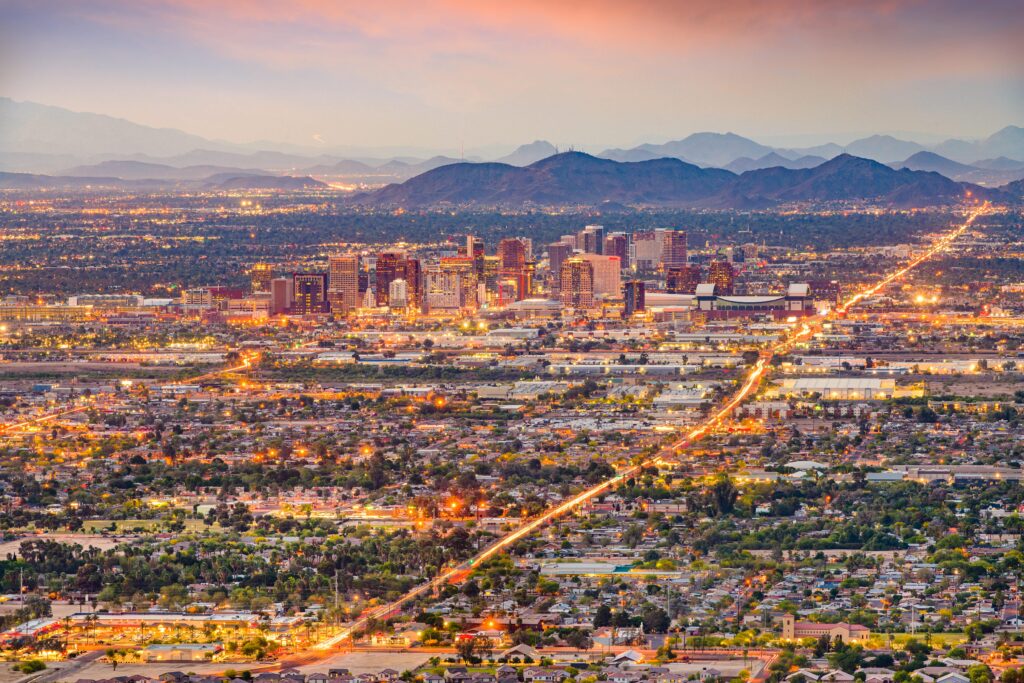
phoenix-Arizona-usa
Additional Costs
Beyond the permit application fees, businesses should account for potential additional costs associated with the permitting process. These include structural and electrical inspection fees, charges for variance applications, and fees for permit renewals, especially for temporary signs or seasonal displays. Bonds or insurance may also be required for larger signs, particularly those near public spaces or highways. A business’s signage budget should include ongoing compliance checks and maintenance costs.
City-by-City Fee Overview
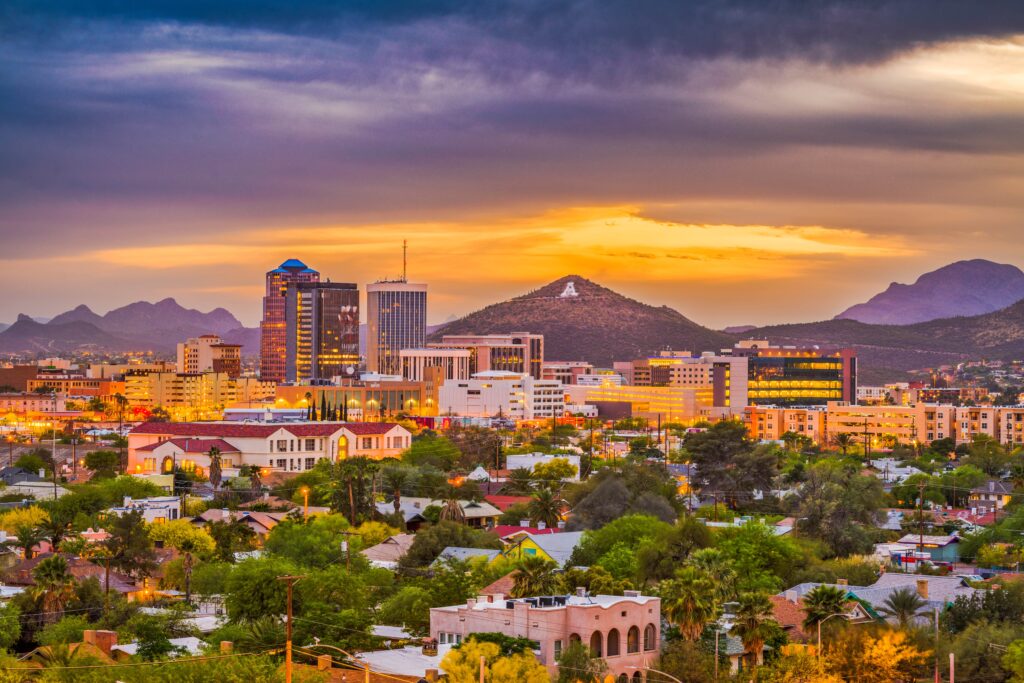
tucson-arizona-usa-skyline
Major cities in Arizona often have distinct fee structures based on their unique regulations. For example:
- In Phoenix, permits for illuminated signage may include extra charges for energy compliance checks.
- Tucson’s fees might include environmental review costs for signs near scenic routes.
- Scottsdale could impose higher fees for luxury zones requiring premium materials and designs.
Understanding these nuances ensures businesses can budget accurately and avoid unexpected expenses during the permitting process.
Environmental and Aesthetic Standards for Signage in Arizona
Light Pollution and Dark Sky Compliance
Arizona is renowned for its pristine night skies, especially in cities like Flagstaff, which enforce strict Dark Sky Ordinances. Illuminated signs must utilize shielded lighting and adhere to specific brightness levels to minimize light pollution. To preserve the natural beauty and integrity of Arizona’s environment, businesses operating near residential areas or scenic routes must carefully position and orient their signage to prevent glare and spillover.
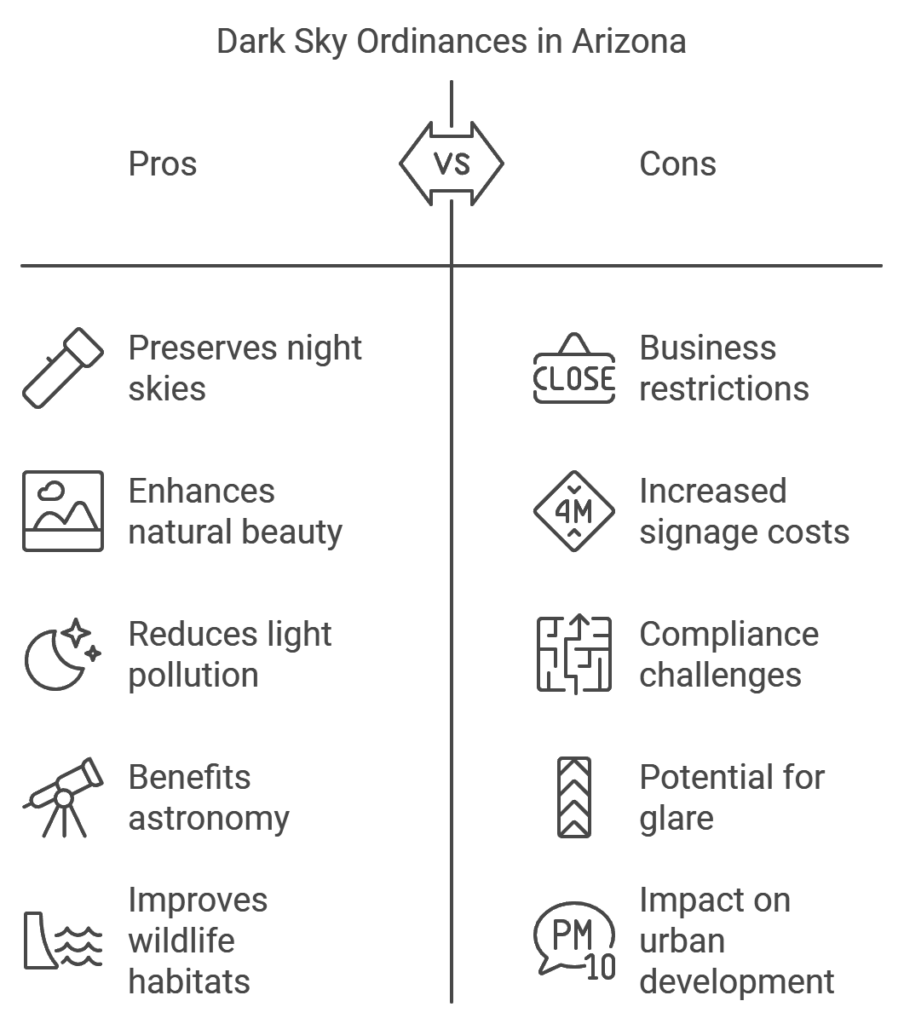
Understanding the Dark Sky Ordinance in Arizona
Eco-Friendly Practices
Arizona’s signage regulations promote sustainable business practices. Many municipalities encourage the use of recyclable materials, energy-efficient lighting, and low-impact designs to reduce environmental footprints. Businesses widely favour LED lighting for its energy efficiency and longevity, as it offers a cost-effective solution that aligns with compliance standards.
Aesthetic Guidelines
Arizona expects its signage to complement its diverse landscapes and urban aesthetics. For instance, signs in Sedona must harmonize with the area’s iconic red rock formations, while those in Tucson’s historic districts require materials and designs that reflect the region’s heritage. Businesses in luxury zones like Scottsdale must often invest in premium, high-quality signage to align with the area’s sophisticated branding.
Variance and Appeal Processes for Sign Permits in Arizona
When to Apply for a Variance
There are scenarios where a business’s signage plans may not conform to standard regulations, necessitating a variance. Common reasons include exceeding height limits to enhance visibility, disregarding setback rules due to property layout, or granting exceptions for specific materials or designs in historic or environmentally sensitive areas. Variances allow businesses to customize their signage while adhering to broader community standards.
Variance Application Process
Applying for a variance requires a detailed proposal that justifies the need for exceptions. Documentation typically includes site plans, elevation drawings, and statements addressing how the variance will not negatively impact public safety or community aesthetics. Businesses should also anticipate attending hearings with local zoning boards to present their case. This step is crucial for securing approval, particularly for signs in high-visibility or protected areas.
Appeal Process for Permit Denials
Businesses can appeal the decision if the local zoning or planning board denies a signage permit application or variance request. This process involves submitting revised documentation and attending appeal hearings with the local zoning or planning board. Working with experts like BlinkSigns can streamline this process, ensuring businesses present compelling cases supported by thorough documentation and compliance expertise.
Maintenance and Renewal Requirements for Arizona Sign Permits

Sedona-view-arizona-usa
Routine Maintenance for Compliance
Maintaining signage in Arizona is essential for ensuring long-term compliance with state and local regulations. Illuminated and digital signs must undergo regular inspections to verify the integrity of electrical components, brightness settings, and overall functionality. Freestanding signs, such as monument or pylon signs, require routine checks for structural stability, especially in areas prone to extreme weather like high winds or intense sun exposure.
Permit Renewal Requirements
Temporary and seasonal signs often require periodic renewals, with specific timelines dictated by municipal codes. Modifying permanent signage requires fewer renewals and ensures adherence to updated zoning and compliance standards. Renewal processes typically involve submitting updated site plans and proof of ongoing compliance with zoning ordinances and environmental guidelines.
Recordkeeping for Long-Term Compliance
For businesses aiming to stay compliant, meticulous records of permits, inspection reports, and maintenance logs are crucial. Such documentation not only simplifies renewal processes but also serves as a safeguard against potential fines or enforcement actions. BlinkSigns helps clients manage these records, guaranteeing consistent compliance across all signage types.
Future Trends and Innovations in Arizona Signage
Digital and Interactive Displays
The rise of smart signage and augmented reality (AR) technologies is transforming how businesses engage with their audiences. Real-time updates for digital displays enable dynamic marketing campaigns, and AR-enabled signage provides immersive customer experiences. These advancements are particularly beneficial in tourist-heavy areas like Scottsdale and Sedona, where innovative displays can captivate visitors and enhance brand visibility.
Sustainability in Signage Design
Sustainable practices are becoming a cornerstone of signage design in Arizona. From using recyclable materials to integrating solar-powered lighting, businesses are increasingly adopting eco-friendly solutions that align with regulatory standards and consumer preferences. These practices not only support environmental goals but also reduce long-term operational costs.
Integration of Local Culture
Signage incorporating elements of Arizona’s unique culture and natural beauty is gaining popularity. For instance, designs inspired by Native American art or desert landscapes resonate deeply with locals and visitors. Such culturally integrated signage creates a sense of place and enhances community engagement, setting businesses apart in a competitive market.
Conclusion: Simplifying Signage Permitting in Arizona
The Arizona signage permitting process is essential for ensuring safety, compliance, and effective business communication. BlinkSigns offers tailored solutions for navigating these regulations, helping businesses create impactful, compliant signage.
Blnksigns helps you achieve your signage goals while ensuring long-term success in Arizona’s dynamic environment. For more information, contact us at Sales@blinksigns.com.